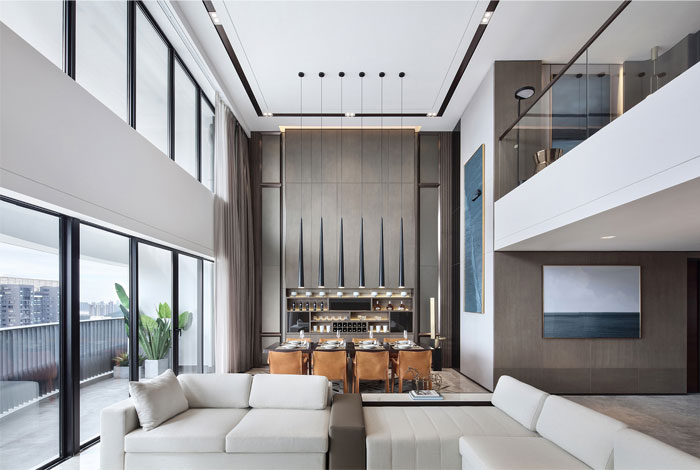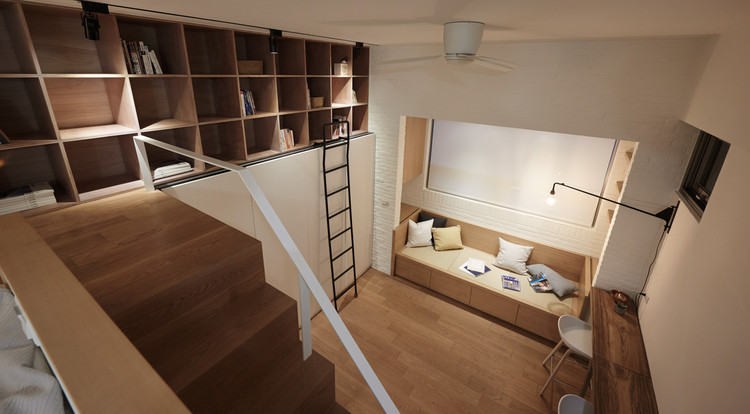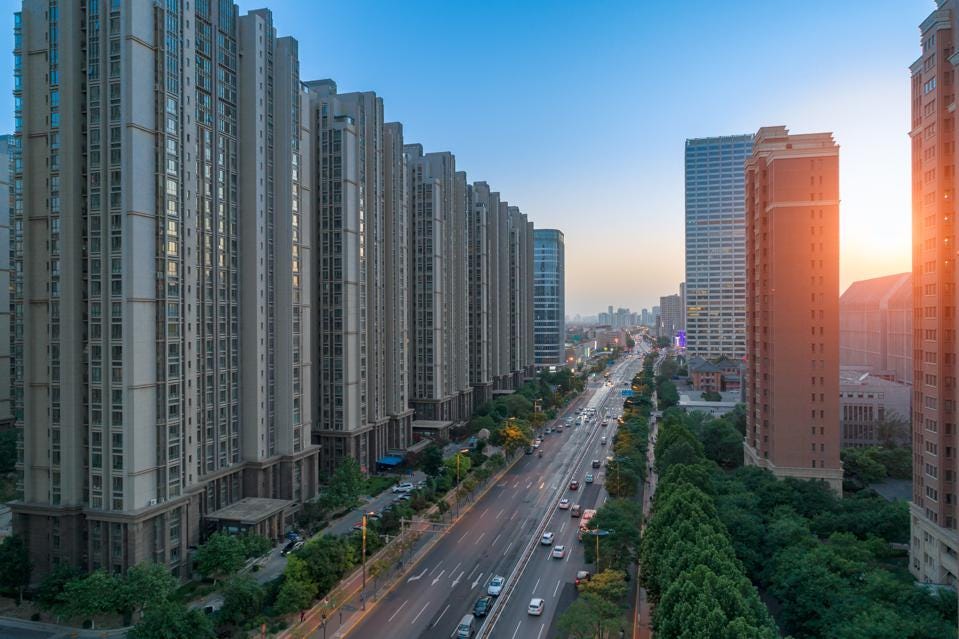Living in a Chinese apartment is a unique experience that blends modernity with tradition. Most apartments are in high-rise buildings and come in different sizes and designs, ranging from cozy studios to spacious multi-bedroom units. The apartments are typically furnished with modern appliances, sleek furniture, and stylish decor, with many Chinese homeowners placing great emphasis on the aesthetics of their living spaces.
The real estate market in China has seen a significant boom in recent years, with apartment complexes sprouting up across the country.
Rate of new apartment buildings and renovations
China’s urbanization has been a rapid and ongoing process, leading to a massive demand for housing. As a result, new apartment buildings are being built at an incredible rate to meet the growing demand. According to the National Bureau of Statistics of China, between 2011 and 2020, a total of 242 million square meters of new residential housing was completed every year on average. This amounts to around 5 million new units per year, an astounding figure that highlights the scale of China’s housing construction industry.
Moreover, the Chinese government has been actively promoting the development of affordable housing, particularly for low-income families. In 2020, China’s Ministry of Housing and Urban-Rural Development announced plans to build 7.5 million units of affordable housing, including rental and subsidized ownership housing.
In addition to new construction, there is a significant market for the renovation of older apartment buildings in China. Many of these buildings were constructed in the 1980s and 1990s and are now in need of upgrades and modernization. The Chinese government has launched several initiatives aimed at renovating older housing stock, particularly in urban areas. In 2020, the government announced plans to renovate 39,000 old residential buildings, with a total floor area of 195 million square meters.
Impact of urbanization on demand for different types of housing
China has experienced rapid urbanization in recent decades, with millions of people migrating from rural areas to cities. This trend has had a significant impact on the demand for different types of housing in the country. As cities become more crowded and space becomes scarce, apartments have become the most popular type of housing in China’s urban areas.
Due to limited space, developers have increasingly focused on building high-rise apartment buildings in urban areas, which has made apartments the most affordable and accessible option for many urban dwellers. In addition, the convenience of living in an apartment, such as access to public transportation and nearby amenities, has made them a popular choice.
However, there is also a growing demand for larger and more luxurious properties such as villas and townhouses, particularly among wealthier Chinese citizens. These types of housing offer more space, privacy, and a higher standard of living.
Impact of changing demographics on the real estate market
The changing demographics in China are reshaping the real estate market and creating new opportunities for developers and investors. One trend is the rise of single-person households, which has led to an increased demand for smaller apartments and studios.
At the same time, the aging of the population is also having an impact on the real estate market. With a growing number of older adults in China, there is an increased demand for retirement communities, assisted living facilities, and other types of senior housing. This demand is expected to continue to grow in the coming years, as China’s population ages.
To address these trends, developers and investors are focusing on building smaller, more affordable apartments and investing in senior living facilities. In addition, there is a growing trend towards mixed-use developments that combine residential and commercial spaces, such as apartments with ground-level retail or office space.
Impact of COVID-19 pandemic on the real estate market
The COVID-19 pandemic has had a significant impact on the real estate market in China. One of the most notable changes has been the shift in consumer behavior towards more remote and digital interactions. This has led to an increase in demand for virtual tours, online property searches, and other property technology (proptech) solutions that allow buyers and sellers to conduct transactions remotely.
The pandemic has also led to an increase in the use of proptech solutions in property management and maintenance. These solutions have helped property managers and landlords to reduce physical interactions with tenants and to better manage properties remotely.
Materials used in Chinese apartment complexes
Chinese homes are made of a variety of materials, depending on factors such as location, climate, and building regulations. Some of the most used materials include concrete, bricks, steel, and wood.
Concrete is a popular building material[HW10] in China, particularly for high-rise buildings and large-scale construction projects. Concrete is durable, fire-resistant, and has good thermal mass, making it an ideal choice for buildings in areas prone to earthquakes and other natural disasters.
Bricks are also widely used in Chinese construction, particularly for low-rise residential buildings. However, they are not as strong as concrete and may be less suitable for buildings in earthquake-prone areas.
Steel is another common building material in China, particularly for large-scale commercial and industrial buildings.
There is an increasing emphasis on energy-efficient and sustainable construction in China, which has led to a growing interest in green building materials and technologies, such as insulation, solar panels, and smart home systems. Additionally, there is a focus on improving indoor air quality and reducing pollution, which has led to a demand for building materials that are low in volatile organic compounds (VOCs) and other harmful chemicals. Overall, the use of sustainable and eco-friendly building materials is likely to continue to increase in China as the country seeks to reduce its carbon footprint and promote sustainable development.
Trends in Chinese apartment design
The design of Chinese apartment complexes has undergone significant changes over the years, reflecting changes in lifestyle and preferences. In recent years, there has been a growing trend towards larger apartments with modern amenities, particularly in first-tier cities such as Beijing and Shanghai.

One trend in Chinese apartment design is the inclusion of outdoor spaces such as balconies, patios, or terraces. These spaces allow residents to enjoy the outdoors without having to leave their apartments. This is especially attractive in urban areas with limited green space. However, not all apartments come with outdoor spaces, and they are more common in newer, higher-end buildings.
In addition to outdoor spaces, apartment designs feature open-concept designs that allow for more natural light and air flow. This marks a departure from traditional Chinese apartment designs, which often had separate rooms for different functions such as the kitchen, living room, and dining room. In these older designs, kitchens were typically closed off from the rest of the apartment. However, there has been a trend towards more open kitchens in recent years, particularly in higher-end apartments.
As for non-luxury apartments, one trend is the compact layout, which maximizes every inch of space available. This means that apartments are designed to be efficient and functional, with clever storage solutions and innovative space-saving ideas. Despite the limited space, Chinese apartments are often equipped with state-of-the-art technology, such as smart home systems, high-speed internet, and advanced security measures.

Comparing Chinese apartments to Western ones
When comparing Chinese apartments to Western ones, there are some significant differences. For example, many Western apartments have open-concept designs with large living spaces that flow into the kitchen and dining areas. This contrasts with traditional Chinese apartment designs, which tend to have separate rooms for different functions.
Foreigners tend to prioritize larger living rooms in their search for apartments, often valuing communal spaces for entertaining and relaxing with friends and family. In contrast, Chinese residents tend to place more emphasis on the size and quality of their bedrooms, as they often spend more time in these private spaces. This cultural difference is reflected in the design and layout of many Chinese apartments, which may feature smaller living rooms and larger bedrooms. However, there are also exceptions to this trend, particularly among younger generations who are more open to Western designs and may prioritize larger living spaces in their apartment search.
Living in a Chinese apartment means living in a community
One key factor that contributes to a strong sense of community in Chinese apartment buildings is the presence of shared spaces and facilities. Many apartment buildings in China feature communal areas such as gardens, playgrounds, and community centers, which provide opportunities for residents to interact and socialize. These shared spaces may be managed by a community association, which is responsible for maintaining and organizing community events and activities.
Another factor that contributes to a strong sense of community in Chinese apartment buildings is the emphasis on socializing and relationships in Chinese culture. It is not uncommon for neighbors to greet each other and strike up conversations in common areas such as elevators, hallways, and communal gardens.

In addition to these factors, the design and layout of many Chinese apartment buildings also play a role in fostering a sense of community. Many apartment buildings are designed with shared hallways and stairwells, which encourage residents to interact with each other as they go about their daily routines. Additionally, many Chinese apartments are built with balconies or other outdoor spaces that provide a shared view of the surrounding area.
Overall, living in a Chinese apartment often means living in a community that values socializing, relationships, and shared experiences. While there may be some differences in the way that community is experienced and expressed in Chinese culture compared to other cultures, the strong sense of community that is often present in Chinese apartment buildings can be a valuable and rewarding aspect of daily life for many residents.
Rapid growth of Chinese apartment complexes: what to expect
- The rapid pace of urbanization in China has led to a high demand for housing, with a massive number of new apartment buildings being constructed each year. The Chinese government’s efforts to promote the development of affordable housing and renovate older apartment buildings further fuel construction.
- There is a growing focus on energy-efficient and sustainable construction, with a demand for green building materials and technologies.
- Chinese apartment complexes blend modernity with tradition; latest trends emphasize the inclusion of outdoor spaces and open-concept designs.
- Many Chinese apartments are also designed to be efficient and functional with clever storage solutions and innovative space-saving ideas.
- The presence of shared spaces and facilities, as well as the emphasis on socializing and relationships, fosters a strong sense of community in Chinese apartment buildings, which is highly valued in Chinese culture.
Author: Hannah Wu
Download the ASEAN x China business relations report






